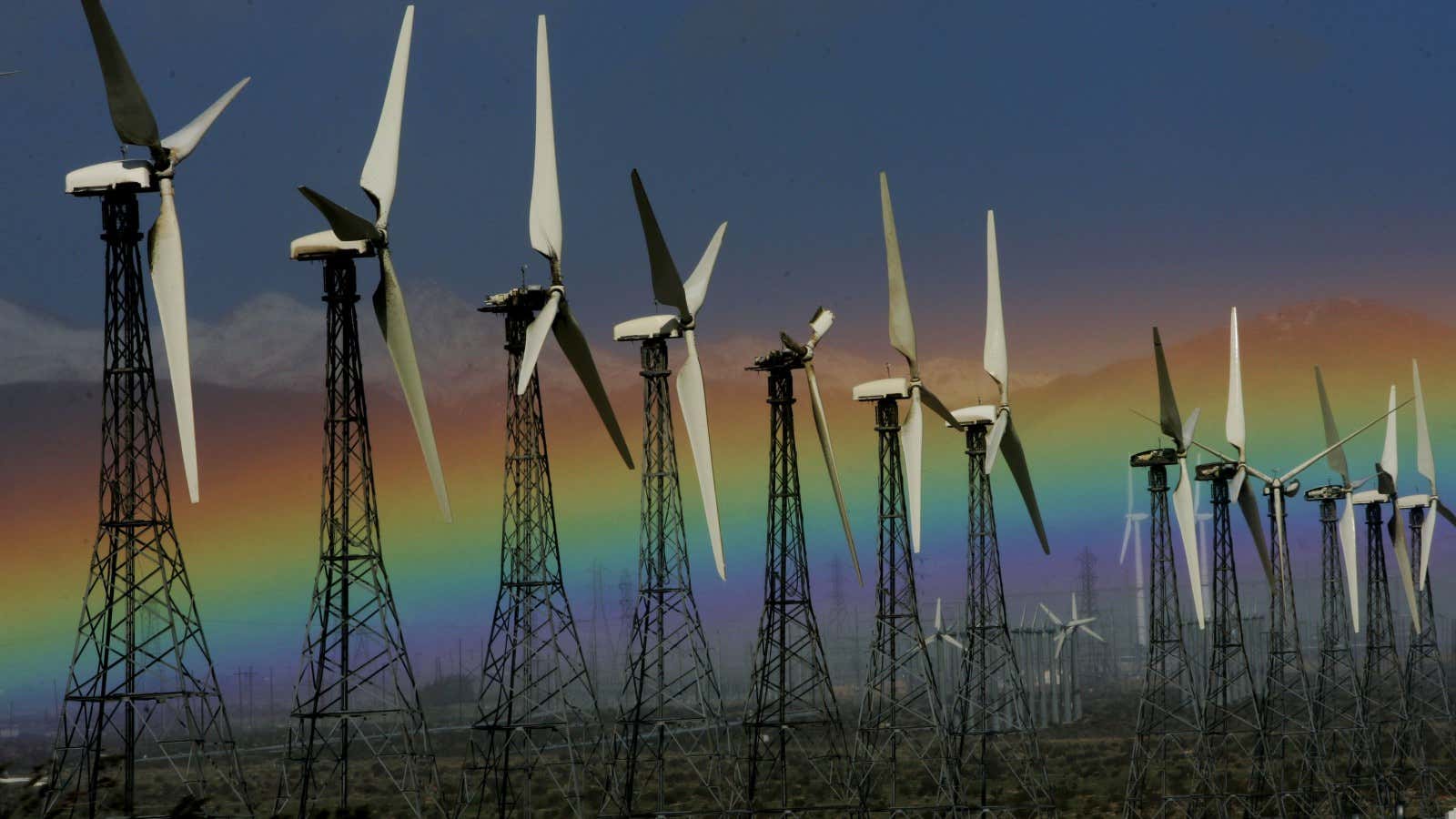The world may have a turned a corner in terms of producing more and more of its energy cleanly.
The International Energy Agency last week sounded an unusually positive note, with one piece of data at the center: global growth is now possible without increased carbon emissions. In 2014, for the first time, global GDP grew but CO2 emissions stayed flat (pdf, p. 17). The two had “decoupled:”
The decoupling is by no means the only positive indicator. A report (pdf) this week from REN21, a renewable energy policy think-tank, made clear the scale of some sector changes.
Globally, 23 countries are producing more than 10% of their final energy use—that is, not just electricity—from renewables. These are a mix of countries that have made huge efforts to build renewable infrastructure, like Germany, and those that have harnessed convenient national resources, like Costa Rica:
Investment has also continued to rise. The increase is most marked in technologies that are now seen as established, like wind and solar power, investment in which has increased 11% and 25% year-on-year:
As a result of this investment, an increasing number of people were employed by the renewable industry in 2014, with most jobs created in China, part of “an ongoing regional shift from Europe and North America to China and other Asian nations.”
This is all welcome, as the renewable energy industry has experienced its share of catastrophes. Just when money was beginning to flow into the sector (pdf) in the years prior to 2008, a financial crisis swept across the world, meaning projects were shelved. Demand for energy fell, slashing prices.
The advent of US shale oil was also disastrous, lowering the price of crude oil that is the benchmark upon which other forms of energy are judged, and having consequences like knocking the bottom out of the coal market, so coal began again to compete with renewables. Add this to the problems Europe has had keeping a carbon trading market running and the complexities and uncertainties of national subsidy regimes—well, it was looking a little bleak for renewables.
While some problems are waning, others are becoming more intense. But the industry may be hitting the critical mass it needs to become unassailable.
